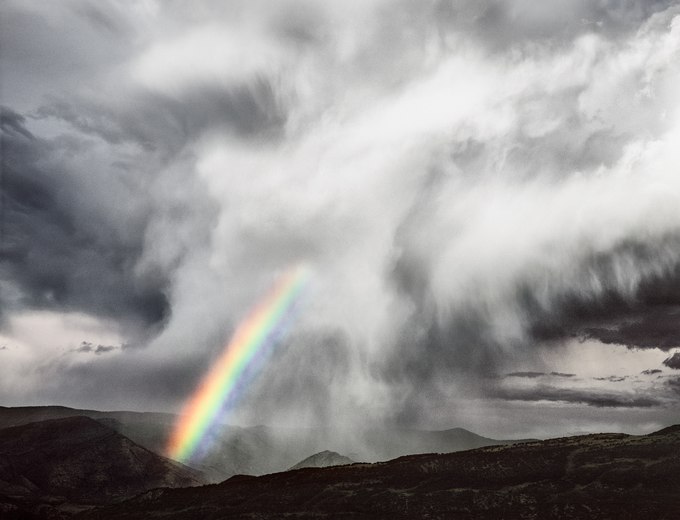Beginning midday during the high country's summer monsoon season, clouds form, grow, and rise off the shoulders of central Colorado's Elk Mountain Range. By late afternoon, storm clouds fed by sub-tropical moisture and rising heat channel through breaks in the range to the west and over alpine valleys to the east, trailing hail and shafts of rain. As seen from the top of the Brush Creek Valley near Aspen, a final streak of daylight cuts through the clouds, partially illuminating a rainbow before the sun sets.
As sunlight enters each raindrop that makes up the rainbow, it reflects off the interior rear surface back toward the sun, as its angle changes. The light's movement into and then out of the raindrop separates into a spectrum of colors. Each of these colors exits the raindrop at different angles, so what we see, from the outer to the inner edges, is a progression of red, orange, yellow, green, and blue.
The sudden appearance of this rainbow, especially as a shaft of light emerging from a storm cloud, feels mythological. Interpretations of rainbows vary across cultures. In Greek mythology, rainbows symbolized a bridge connecting heaven and earth. But what moved me most was the story of individuals reaching full Buddhahood. Described as self-liberation from their physical bodies, those who attain enlightenment at the moment of death transform into a 'rainbow body,' a body of light that can appear anytime and anywhere when they direct their compassion.

